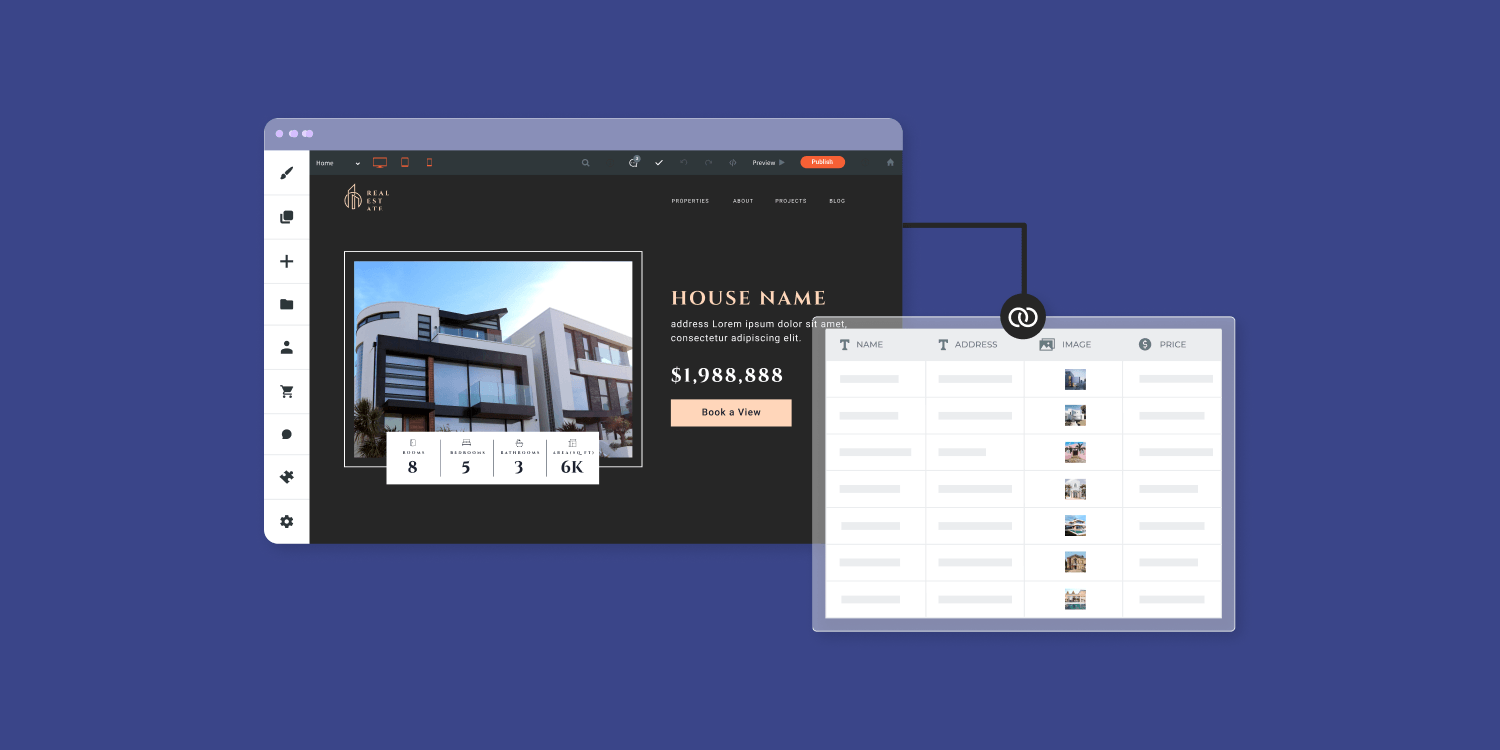In almost every industry you can think of, there’s a
vertical SaaS platform focused on helping small businesses be successful. While many SaaS platforms have done a great job of providing value to their clients over the years, simply offering solutions without focusing on your customers’ infrastructure will no longer yield the long-term, repeat customers needed for SaaS platforms to grow.
To ensure the continued success of vertical SaaS solutions’ customers, these platforms must provide small businesses with a robust digital presence, mainly websites.
With more than 28 percent of small businesses that still do not have a website and even more that have underperforming websites, this is a huge opportunity for vertical SaaS platforms to capitalize on the opportunity of a lifetime.
Download the eBook to learn how vertical SaaS providers amplify customer value with websites.
Critical Takeaways From the eBook
A Top-Performing Website Is Essential for SMB Success
To stay competitive in today’s digitally driven world, having a digital footprint is no longer negotiable. Consumers rely heavily on the ability to find a business online and establish trust in that business by the user experience a website provides.
Clients that either lack a website or have a poor-performing website will not be able to survive and thrive long without a robust digital presence to keep growing their businesses.
This matters for vertical SaaS platforms since many platforms rely on their customers already having a website to imbed their solutions and require continued success to retain them as long-term buyers.
Since many small businesses struggle with the technical knowledge to create powerful, user-friendly websites, it’s in the best interest of vertical SaaS providers to take ownership of their customers’ digital presence by offering websites in addition to their current solutions.
Innovation Is the Best Way to Differentiate From Other Vertical SaaS Solutions
With new vertical SaaS platforms popping up every day, constant innovation is one of the best ways to differentiate your offering. Many SMBs prefer to partner with vertical SaaS platforms that offer an all-in-one solution that speaks to a multitude of their pain points, not just a few.
By focusing on meeting more of your customers’ pain points, you can provide an unmatched customer experience that will establish you as an indispensable partner by adding websites to the mix. In addition, clients will be less likely to turn to other platforms that offer less of what they need to run their businesses effectively.
Download the eBook for more info on how to differentiate your SaaS offering by selling websites.
The Ultimate Partnership: Website Building Platforms and Vertical SaaS Providers
While selling websites to your customers may seem intriguing, what’s the best way to get started? The most cost-effective and least-development-heavy way to add a website offering to your vertical SaaS platform is by partnering with a website building platform like Duda.
Partnering with a website building platform allows vertical SaaS platforms to continue to focus on their core competencies while increasing the value of their platform by giving their clients an impressive digital presence.
Instead of investing thousands of hours on perfecting the art of creating and managing websites, vertical SaaS platforms can add a website offering quickly with no prior experience needed. It’s a win for both the SaaS platform and the customer.
By teaming up with a website building platform like Duda, vertical SaaS providers can benefit by becoming a crucial component of their customer’s continued success, improve their product adoption strategy, and increase retention with additional upsell opportunities that websites provide.
Download the eBook to learn how to get started.
Vertical SaaS Platforms Have Already Seen Success Selling Websites (And You Can Too)
Three industries that have already successfully sold websites through Duda’s website building platform include property management, booking, and event management. While you’ll need to download the eBook to learn how these verticals partnered with Duda, we will detail the results of the platforms here.
In the property management vertical, Appfolio, after partnering with Duda increased their overall revenue by 27 percent and decreased their customer churn by 4.8 percent. Today, they average around 90 website sales per month.
Moving over to the booking industry, Bókun (A TripAdvisor company), was able to automate their website builds down to just 5 seconds and reduced their customer churn rates by more than 24 percent.
Lastly, Doo.net in the event management vertical, increased adoption rates of their platform by 200 percent by partnering with Duda and now has over 50 upsell opportunities for their website offering to create a much stickier product for their users.
To learn more about how you can increase customer value for your vertical SaaS platform,
download the eBook now.
Related Posts
By Arnoldo Lopez
•
December 9, 2025
Unlock high-velocity development by integrating the Duda API with your AI assistant using the Model Context Protocol (MCP). Learn to build a functional Duda MVP from a simple prompt.
By Paul Posea
•
October 28, 2025
Discover how SaaS companies are integrating embedded website builders to boost user retention, enhance marketing, and unlock new revenue streams.
By Shawn Davis
•
July 23, 2025
Vertical SaaS companies are on a roll. As of the publication of Fractal’s 2023 “ State of Vertical SaaS ” report the total combined market valuation of all Vertical SaaS unicorns stands at $98.2B, compared to $97.4B the year before . These companies can weather uncertainty in the market, while continuing to grow, because they provide meaningful value to their customers. Even more than that, they provide indispensable value to their customers. But what does it even mean to be indispensable? What does it mean to be “indispensable?” Vertical SaaS hasn’t always been such a hot market. In the early days, investors were understandably concerned about the limited market available to these companies. Could there really be enough tech-savvy laundry operators for a niche product like Cents to survive and, perhaps, even thrive? The answer turned out to be a resounding “Yes!” Businesses, particularly SMBs, love when their solutions are tailored to their exact needs. They especially love when their solutions meet all of their needs. According to a survey by Vcita , 79% of SMB owners are using two or more tools to manage their business yet, among those owners, 90% would prefer to combine those capabilities into just one tool. This is a big deal. Money is not as easy to come by as it once was, especially for small businesses, and spending is tight. In a McKinsey study of 3,500 SMBs , one in four businesses reported that they intend to cut their technology spending by up to 25% in the next 12 to 24 months. The path forward for SMBs, then, is fairly clear; technology consolidation. Replacing multiple tools—and multiple subscriptions—with one single product can reduce overhead, increase efficiency, and cut costs. All even higher priorities than before.
Show More










